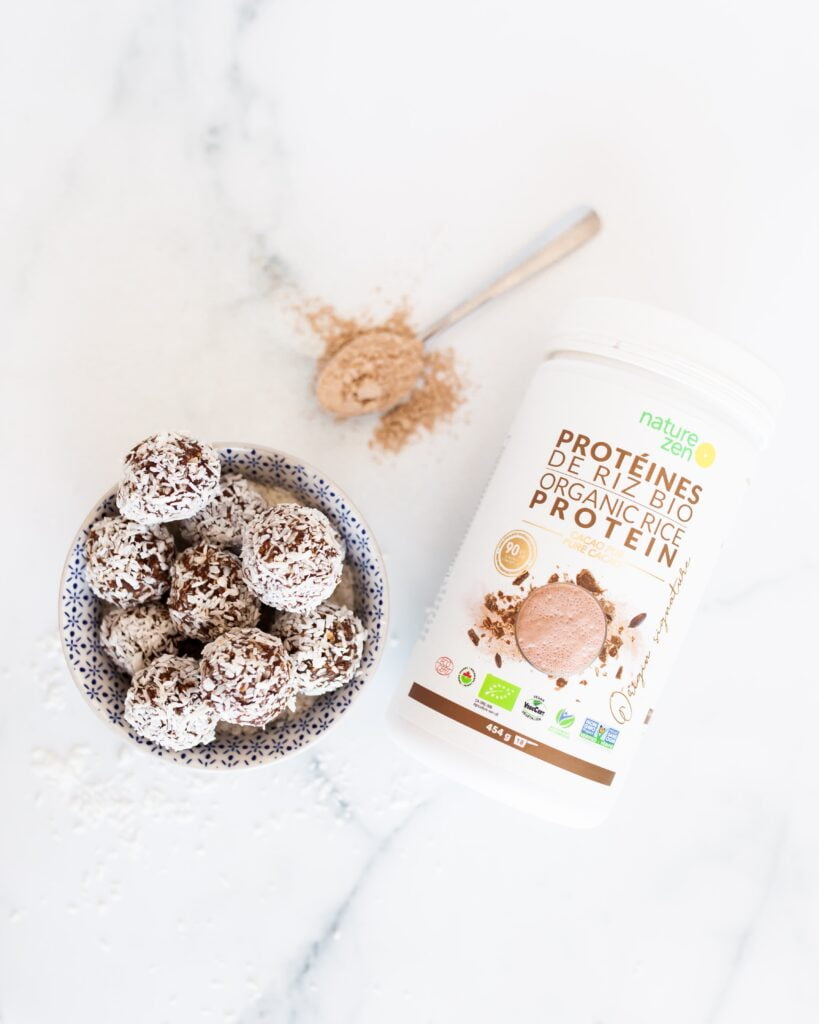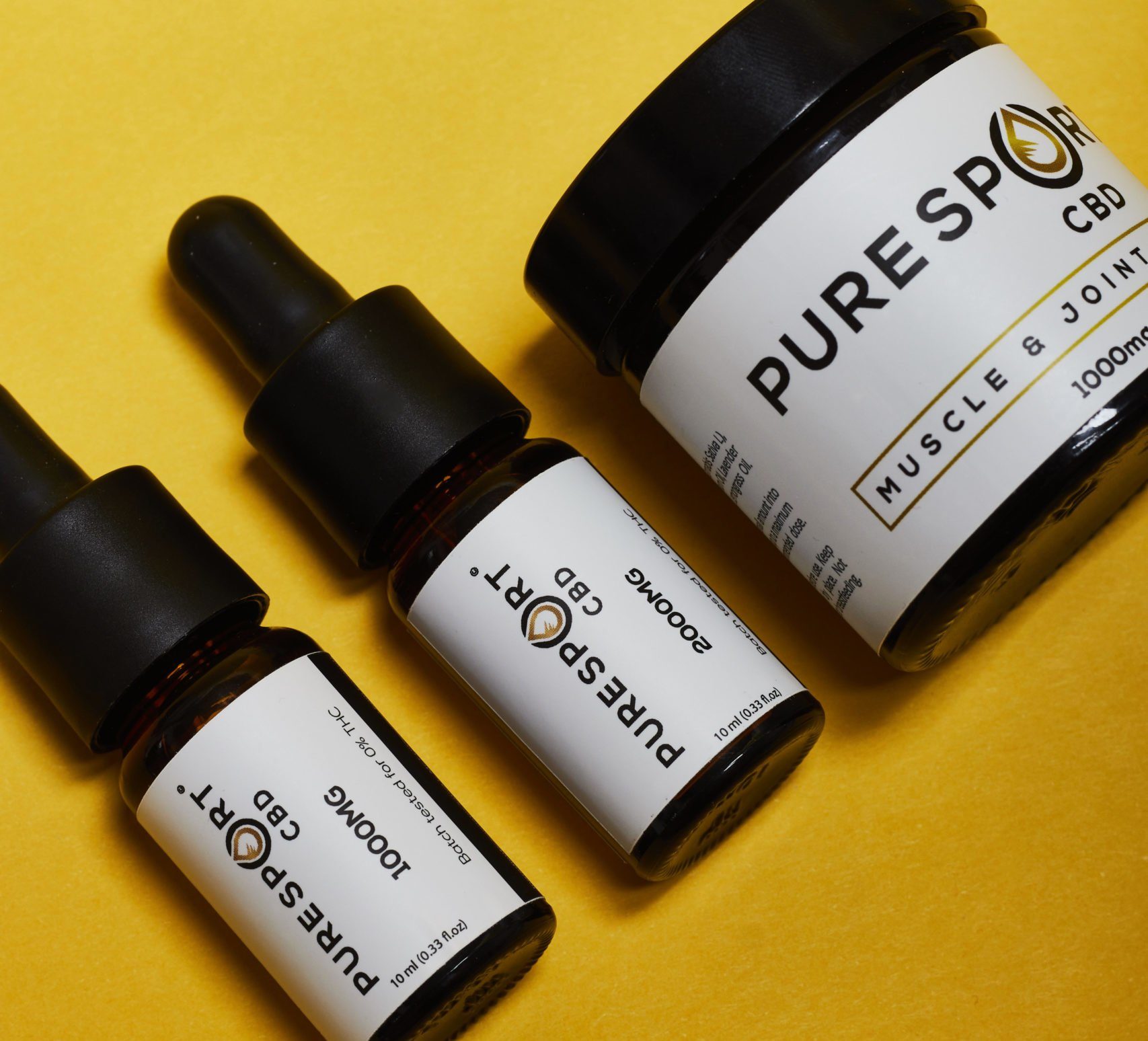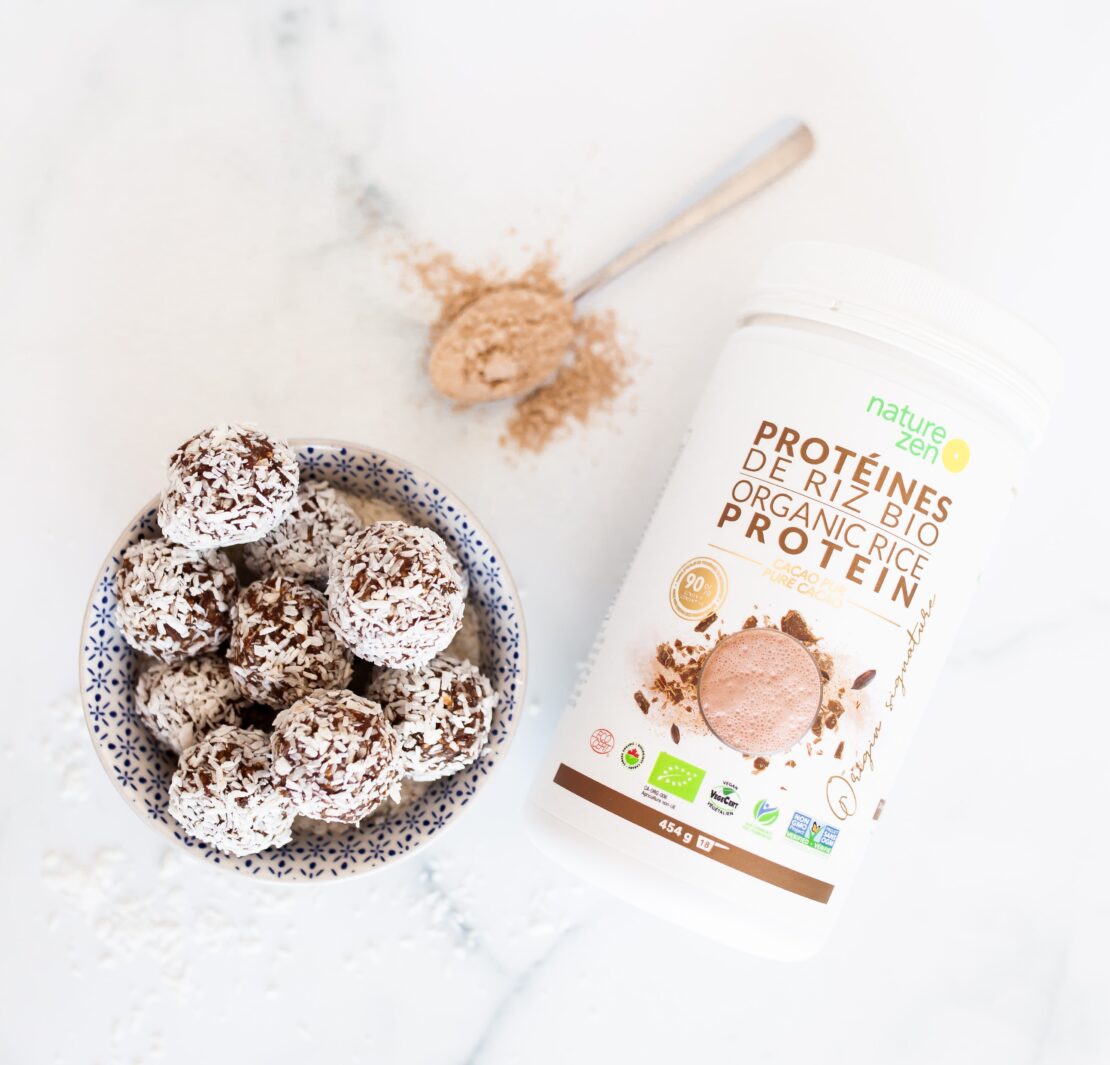Since both protein and the amino acids are the building blocks of your body’s muscle tissues, many experts connect protein consumption with muscle gains.
Protein acts for the body like the bricks do for the house. Amino acids are very significant for human growth.
Our bodies make many amino acids, but nine essential amino acids (EAAs) need to be taken through food or supplements because the body cannot produce them.
You must instead eat EAAs from foods like meat, soy, beans, and nuts. Maximizing muscle protein synthesis can be assured with a diet rich in amino acids.

Leucine, an amino acid, is involved in a number of anabolic or muscle-building physical processes.
Since sufficient Leucine levels cause muscle protein synthesis, it is termed as “Leucine trigger principle.” Amino acids, which are the protein’s building blocks, aid in muscle tissue repair and maintenance. Protein is crucial for gaining muscle mass. Protein aids in your post-workout recovery because muscle tissues become slightly torn during a physical activity.
The proper quantity of protein must be consumed if you want to develop a healthy physique. Protein is one of the essential building blocks for lean tissue, the muscular mass, and bone density, and that’s only the beginning.
Protein is actually required for every physiological process. Despite the fact that it is essential, most health-conscious individuals are unaware of how or why of protein consumption.
In fitness and weight-reduction industry, numerous fallacies exist about this essential building component.
Actin and Myosin are two protein filaments, which form a structure in a muscle tissue. To start muscular contractions, both filaments interact with each other. Later, mechanical stresses brought on by repeated movements harm these protein filaments.
Your muscles require a regular protein quantity to rebuild and continue to operate after your workouts.
Bodybuilders frequently train with extremely heavy weights because the mechanical stress from weight training is difficult enough to increase muscle size (known as hypertrophy) and strength.
To ensure that their bodies contain enough protein-building blocks to preserve their sculpted physiques, they may use supplements like the best available protein powder and protein bars.
Getting the required physique requires more than merely consuming protein shakes. The kind and quantity of protein you consume are one of several variables that affect the size and strength of the various muscle fibre types in your body.
The Benefits of a Protein-rich Diet for Muscle Building
Helps Increase Muscle Mass
Everyone has a different objective when discussing sports, and building muscle is probably the one you’ve already heard in the sports room.
Protein is essential for building muscle and it helps in strength and resistance training. Because the body quickly absorbs whey protein after exercise, it is a popular choice for fuelling athletes. This makes it beneficial for promoting muscular growth.
Aids Muscle Recovery
Training puts a constant demand on your body; therefore, after putting in a lot of effort, you should also take care of your muscles.
A high-protein diet can aid in the recovery of your muscles if you add stretching, massage, and proper muscle-building technique to your routine.
How can a protein-rich diet achieve that? This happens because the other amino acids serve as building blocks for your muscles.
The amino acid leucine, which is present in whey and many different protein sources, initiates the protein synthesis that results in muscle development.
Thus, you should be sure to consume the required quantity of protein, especially during periods of tough exercise.
Helps Bone and Muscle Maintenance
The significance of protein consumption for muscle mass in sports has already been mentioned. But there is more to it.
Being a vital component for maintaining healthy muscles and bones, protein is an excellent ally to your body if you are making efforts to muscle mass.
Maintains Ideal Weight
A diet high in protein helps you stay in your desired shape because it curbs your appetite. Your daily nutritional needs are satisfied, and you will feel fuller with a small amount of protein in your diet. It is regarded as an effective weight-loss method.
Supports Bone Metabolism
It aids in improving our body’s absorption of calcium and magnesium, strengthening our bones in the process.
Additionally, it aids in the recovery of bone fractures and even osteoporosis, which is considered as a hazardous bone condition.
Improves Immune System
Proteins are crucial in boosting the immune system’s strength since they are the building blocks of antibodies, which fight against many infections.
Our immune system battles with “antigens,” which are foreign substances that cause multiple illnesses and infections.
As a result, antibodies strengthen our immune system and render us resistant to a wide range of ailments, aiding in the prevention of diseases.
Excellent protein sources include dairy products like yogurt and cheese. They are also abundant in all the vitamins, minerals, and other nutrients that our bodies need.
Yogurt contains probiotic microorganisms that are beneficial to the digestive system and hence boost the immune system.
High Protein Foods
If you want to feel full after meals, improve muscles, build bones, and boost immunological function. Healthy fats and carbs maintain our health.
Getting enough protein should be given priority. Studies show that eating a protein-rich diet has several benefits, including controlling blood sugar, maintaining a healthy weight, and improving calcium absorption, which eventually supports bone health.
To promote your general health, it’s imperative to consume enough protein.
Eggs
The most nutrient-dense foods are whole eggs. They have a plentiful supply of nutrients, antioxidants, and a significant quantity of easily absorbable protein.
Whole eggs, for instance, are rich in Vitamin A, B12, and selenium. They are also abundant in choline, a crucial vitamin during lactation or pregnancy.
Whole eggs provide nutrients; at the same time, they give you a significant energy boost. It is important to remember that egg whites are almost entirely protein.
Almonds
The nutrient-dense almonds are rich in Vitamin E, fibre, magnesium, and manganese. They include a lot of plant-based proteins as well.
Consuming almonds can help reducing the risk of heart diseases, high blood pressure and cholesterol. For a boost of protein and fibre, add almonds to salads and grain bowls.
Consider including cashews or pistachios in your foods to increase nuts intake. The two mentioned nuts are both loaded with protein.
Chicken Breast
It is an excellent option to increase your protein consumption because it offers several nutrients, including selenium, zinc, and vitamins.
Furthermore, it is simple and exceptionally easy to cook. It can taste fantastic in different recipes.
Cottage Cheese
It is low-fat and low-calorie but high in protein, cottage cheese contains high levels of Vitamin B12, trace metals, and other minerals. Cottage cheese is filling just like eggs.
Greek Yogurt
It is also known as strained variety of yogurt. It is protein-rich and a good source of numerous nutrients.
It’s a versatile kitchen item because of its tangy flavour, which goes well with sweet and savoury meals. Greek yogurt can be used to make different products, salads, and dressings.
It can also be eaten on its own with a piece of fruit and nuts for some extra crunch. Choose Greek yogurt with no added sugar when you’re shopping.
Lentils
The users of vegetarian/vegan diet can consume lentils because of rich plant-based protein. They contain many additional nutrients, such as fibre, magnesium, foliate, iron, potassium, manganese, and copper.
According to studies, individuals, who frequently consume lentils and other legumes, have a lower risk of heart disease and fatty liver disease.
Beef
A great source of protein is lean meat. Additionally, it contains a lot of B vitamins and other significant nutrients.
A balanced diet may include meat, but limiting your consumption is recommended. A high red meat intake has been associated with a greater risk of illnesses, including colorectal cancers.
If you regularly consume red meat, reduce it and consume poultry, plant-based proteins, and fish.
Fish
Vitamin B12, iodine, and selenium are all present in fish, which makes it a great protein source, in addition to other nutrients.
Heart disease and type 2 diabetes are the two illnesses that hardly affect people whose diets are high in fish.
Omega-3 fats found in fatty fish have numerous health advantages, including supporting heart functions.
Protein Powder
Protein powder can be helpful if you have a time constraint and you are unable to cook a meal.
To improve the protein intake and satiety factor of shakes, add some energy balls, yogurt, and other foods. You may add pea and whey proteins to your diet.
A protein powder can accommodate almost any taste preference and dietary limitation. If you’re searching for a higher protein intake, pea protein and whey protein are great options.
Meal Plan for Muscle Building
Monday
- Breakfast: Eggs scrambled with mushrooms, oats, and a pear
- Snack: Blueberries and low-fat cottage cheese.
- Lunch: White rice, broccoli, and a venison burger
- Snack: Protein smoothie with banana chunks
- Dinner: Asparagus and salmon
Tuesday
- Breakfast: An avocado toast with sunny-side-up eggs and some fresh fruit.
- Snack: Protein-filled balls with almond butter and an orange.
- Lunch: Slices of pork tenderloin with roasted garlic potatoes, carrots, and green beans.
- Snack: Strawberries and protein shake.
- Dinner: Spaghetti with turkey meatballs, marinara sauce, and parmesan cheese, with sautéed kale on the side.
Wednesday
- Breakfast: Corn, bell peppers, cheese, ground turkey and eggs – all combined.
- Snack: Apple, crackers, and a tuna can.
- Lunch: Steamed broccoli and cauliflower served with a tilapia fillet and potato wedges.
- Snack: A pear and protein shake.
- Dinner: Rice, black beans, cheddar, bell peppers, onions, and diced beef with Pico de Gallo.
Thursday
- Breakfast: Blueberries, and Greek yogurt on overnight oats.
- Snack: Jerky and mixed nuts with an orange.
- Lunch: Seasonal vegetables and black and pinto beans with tilapia fillets.
- Snack: Watermelon and protein shake.
- Dinner: Peas, beans, and ground meat with brown rice.
Friday
- Breakfast: Egg, roasted potatoes, and an apple with chicken sausage.
- Snack: Granola-topped yogurt with a pear.
- Lunch: Baked potato, broccoli, sour cream, and chicken breast.
- Snack: Mixed berries and protein shake.
- Dinner: Bell peppers, peas, carrots, brown rice, shrimp, and an egg – all stir-fried together.
Safety Advice for Muscle Building:
For all significant muscular groups (legs, hips, back, chest, belly, shoulders, and arms), strengthening exercises should be performed at least twice per week, according to the most recent national guidelines for physical activity.
One set per session. Typically 8–12 repetitions of the same movement are helpful, while some research shows that two or three sets would be preferable.
A minimum of 48 hours must pass between strength training sessions for your muscles to recuperate.
Be guided by your doctor or a gym instructor, but general safety suggestions are the following:
- The technique is crucial. Ask a certified exercise physiologist, gym trainer, or a registered fitness professional for advice if you’re unsure that you’re properly performing a particular activity.
- Begin gradually. When you first start out, you might only be able to lift a few kilograms. That’s alright. You might be amazed at how quickly your muscles, tendons, and ligaments become accustomed to weight-training workouts. Increase the weight gradually after you can quickly complete 12 repetitions with a particular weight.
- Use only secure, properly maintained equipment. Your risk of injury will be considerably increased if you choose faulty equipment.
- Keep your breath in check. While lifting, breathe properly by exhaling during the harsher or more exertional phase and inhaling during the relaxing phase.
- Always keep the weight under control. Don’t swing the weights through their range of motion or hurl them up and down.
- Lifting should always be done in a solid form to avoid harm from poor technique. Constantly lift weights that you can control; if you feel that a weight is too heavy or out-of-control, slow down or stop.
- Focus on your entire range of movement. When lifting a weight, it must move over the whole joint’s range of motion. With less possible harm from overstretching, the muscle becomes stronger at all points of the joint’s movement.
- Wear the proper attire and protective gear, such as gloves. Don’t overdress; keep it functional (for example, wear clothes that do not restrict movement and allow you to sweat easily).
- Keep your body in a proper form and posture to lower your risk of injury.
- Please don’t drop the weights when you finish a set; instead, carefully place them on the ground. Otherwise, your risk of hurting yourself or others will significantly increase.
- If you are sick or over-exhausted, avoid exercise.
- Avoid attempting to train while injured. Stop working out right away and consult a doctor.
- After a workout, muscles need time to recover and grow. A general rule of thumb is to give the same muscle group at least 24 hours of rest before working out again.
If you’re done reading this, you know all the essentials about muscle building. I hope you found this article helpful. And be sure to consult your doctor before going on any type of diet to increase your muscle weight.







